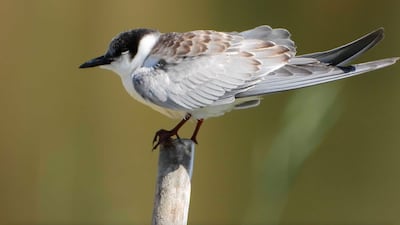Growing up in the small Jordanian town of Azraq, Hazem Al Hreish remembers playing under the natural springs of an oasis. Located in the middle of Jordan’s expansive desert, the natural wonder was an ideal spot to explore and escape the blazing summer sun.
It was not only children who were drawn to the water. As winter approached, up to a million migratory birds searching for a place of refuge found their way to Al Azraq’s wetland. During the arduous journey from Europe to Africa, the pools and marshes proved to be a popular stopover.
That was more than 40 years ago. Since then, Al Azraq wetland has almost disappeared, along with the migratory birds once drawn to the waters.
‘In the past, we used to have millions of birds,’ said Mr Al Hreish, who has worked as the manager of the Azraq Wetland Reserve with the Royal Society for the Conservation of Nature (RSCN) for 15 years.
“Birds disappeared because there was no water to come, refuel and rest,” he said. “So they started to continue their migration without stopping.”
The main cause of the shrinking of the wetlands is the overpumping of the aquifer, a body of porous rock or sediment saturated with groundwater which stretches from Syria across Jordan and into Saudi Arabia.
Jordan is one of the most water-poor countries in the world. As the population rapidly expanded from the 1960s and water sources deteriorated, many resorted to excessive pumping of water from the aquifer to urban areas as well as the illegal drilling of artesian wells for agricultural use.

By the early 1990s, 25 square kilometres of wetland had all but disappeared.
This is where RSCN stepped in, with an aim to increase the water levels by 10 per cent. Slowly the conservation team managed to bring the wetland back to life, through negotiations with the Jordan Water Authority and by using satellite images to help clean up the reeds from former water pools, according to Mr Al Hreish.
|A walk through Al Azraq wetlands today reveals glistening pools and streams amid expanses of dry land.
Although the oasis is only a fraction of what it once was, this year’s autumn migration showed the birds have taken note of the wetland’s return. Since September, Al Azraq has seen thousands of birds stopping over. They will continue to do so until December, when the migratory season ends.
“When we got some of the oasis back, birds started to come to the area again, birds that haven’t come since 1966, birds that haven't come since 1976, and also birds that are coming for the first time,” Mr Al Hreish said. The cinereous vulture, crested honey buzzard, and pallid scops owl, not previously spotted in the area, are among some of the newest visitors to the wetlands, he says.
However, despite strong efforts to maintain the wetland, the fact remains that Jordan is facing a severe water crisis. Currently, the wetland is receiving less than 600,000 cubic meters of water a year, “like the amount equal to a very small farm,” Mr Al Hreish says.
If a longer-term, sustainable solution for alternative and water sources is not reached, he predicts the wetlands will disappear once more.
“How can we leave the importance of Azraq, historically, culturally, and naturally, and let it be destroyed and diminished?” he asks. “The efforts to conserve the Azraq wetland reserve should not go in vain.”

